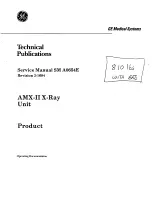
3-26
With rated load on the hook, the boom over the front and outriggers extended, record the
pressure on the gauge while slowly raising the boom tip about three feet above its
horizontal position. Then return the boom control lever to neutral and record the pressure.
Then turn the engine off, push the BOOM lever to the LOWER position and record the
pressure on the gauge. Repeat on the other holding valve. If the pressure to hold the load
is lower at one valve than the other, the lower pressure side is the problem side.
Try to raise the pressure in the problem side to match the pressure on the other valve by
tightening the adjusting screw on the holding valve after removing the adjustment cover
and loosening the lock nut.
If adjusting the holding valve does not fix the problem, continue troubleshooting. Lower the
boom fully, turn off the engine and push the BOOM lever to the full LOWER position.
Switch the holding valves from left-hand to right-hand and vice-versa. Repeat the pressure
tests. If the problem side changes, the holding valve is at fault; if the problem side is the
same, then the piston seal is leaking.
After the problem has been solved, remember that twin lift cylinders must have matched
settings on holding valves. If RCL hoses were disconnected, reconnect them. Bleed the
hoses per instructions on page 3-18.
CROWD CYLINDER HOLDING VALVE
A holding valve is directly connected to the base of the primary cylinder rod. The valve is
designed to hold the boom in position should loss of power or pressure line failure occur.
The crowd cylinder valve should be checked with the boom elevated to the maximum
position and the boom extended several feet. 30,000 pounds (13,600 kg) on a 4 part line is
required for this test. Use the crowd cylinder to lift this load off the ground. The radius of
the test load should be within the rating on the capacity chart.
If the holding valve needs to be set higher, loosen the lock nut on the holding valve
adjusting screw and tighten screw until unpowered movement stops. Retighten the lock
nut to hold the proper adjustment.
Summary of Contents for RT-300-2G
Page 6: ...1 2 DIMENSIONAL DATA Courtesy of Crane Market...
Page 7: ...1 3 RT 300 2G TURNING DIMENSIONS Courtesy of Crane Market...
Page 16: ...Courtesy of Crane Market...
Page 24: ...2 8 Courtesy of Crane Market...
Page 33: ...2 17 CAPACITY CHART FOR RT 300 2G Courtesy of Crane Market...
Page 34: ...2 18 CAPACITY CHART FOR RT 300 2G METRIC Courtesy of Crane Market...
Page 55: ...3 9 Courtesy of Crane Market...
Page 66: ...Courtesy of Crane Market...
Page 67: ...Courtesy of Crane Market...
Page 88: ...Courtesy of Crane Market...
Page 89: ...Powered by TCPDF www tcpdf org Courtesy of Crane Market...
















































